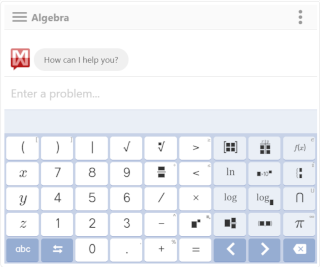
Videos and solutions to help Grade 6 students demonstrate further understanding of division of fractions by creating their own word problems.
Share this page to Google ClassroomThe method of creating division stories has five steps, to be followed in order:
Step 1: Decide on an interpretation (measurement or partitive). Today we used only measurement division.
Step 2: Draw a model.
Step 3: Find the answer.
Step 4: Choose a unit.
Step 5: Set up a situation. This means writing a story problem that is interesting, realistic, short, and clear and that has all the information necessary to solve it. It may take you several attempts before you find a story that works well with the given dividend and divisor.
Classwork
Opening
Discussion
Partitive division is another interpretation of division problems. What do you recall about partitive division?
Example 1
Partitive Division.
Divide 50 ÷ 2/3
Exercise 1
Using the same dividend and divisor, work with a partner to create your own story problem. You may use the same unit, dollars, but your situation must be unique. You could try another unit, such as miles, if you prefer.
Possible story problems:
Example 2
Divide 45 ÷ 3/8
Exercise 2
Using the same dividend and divisor, work with a partner to create your own story problem. Try a different unit. Remember spending money gives a “before and after” word problem. If you use dollars, you are looking for a situation where 3/8 of some greater dollar amount is $45.
Opening
Example 1
Partitive Division.
Divide 50 ÷ 2/3
Example 2
Divide 45 ÷ 3/8
Lesson 6 Problem Set
Solve.
Lesson 6 Problem Set Sample Solution
Lesson 7 Student Outcomes
Students formally connect models of fractions to multiplication through the use of multiplicative inverses as they are represented in models.
The reciprocal, or inverse, of a fraction is the fraction made by interchanging the numerator and denominator.
Two numbers whose product is 1 are multiplicative inverses.
Example 1:
3/4 ÷ 2/5
Lesson 8 Student Outcomes
Students divide fractions by mixed numbers by first converting the mixed numbers into a fraction with a value larger than one.
Students use equations to find quotients.
Example 1: Introduction to Calculating the Quotient of a Mixed Number and a Fraction
Carli has 4 1/2 walls left to paint in order for all the bedrooms in her house to have the same color paint. However, she has used almost all of her paint and only has 5/6 of a gallon left. How much paint can she use on each wall in order to have enough to paint the remaining walls?
Calculate the quotient. 2/5 ÷ 3/4
Lesson 1 to Lesson 8 Review

Try the free Mathway calculator and problem solver below to practice various math topics. Try the given examples, or type in your own problem and check your answer with the step-by-step explanations.
We welcome your feedback, comments and questions about this site or page. Please submit your feedback or enquiries via our Feedback page.